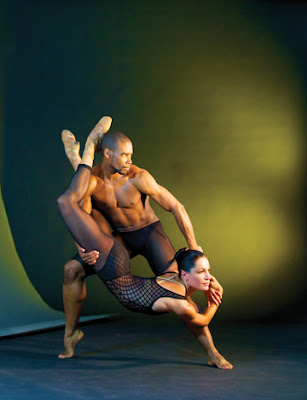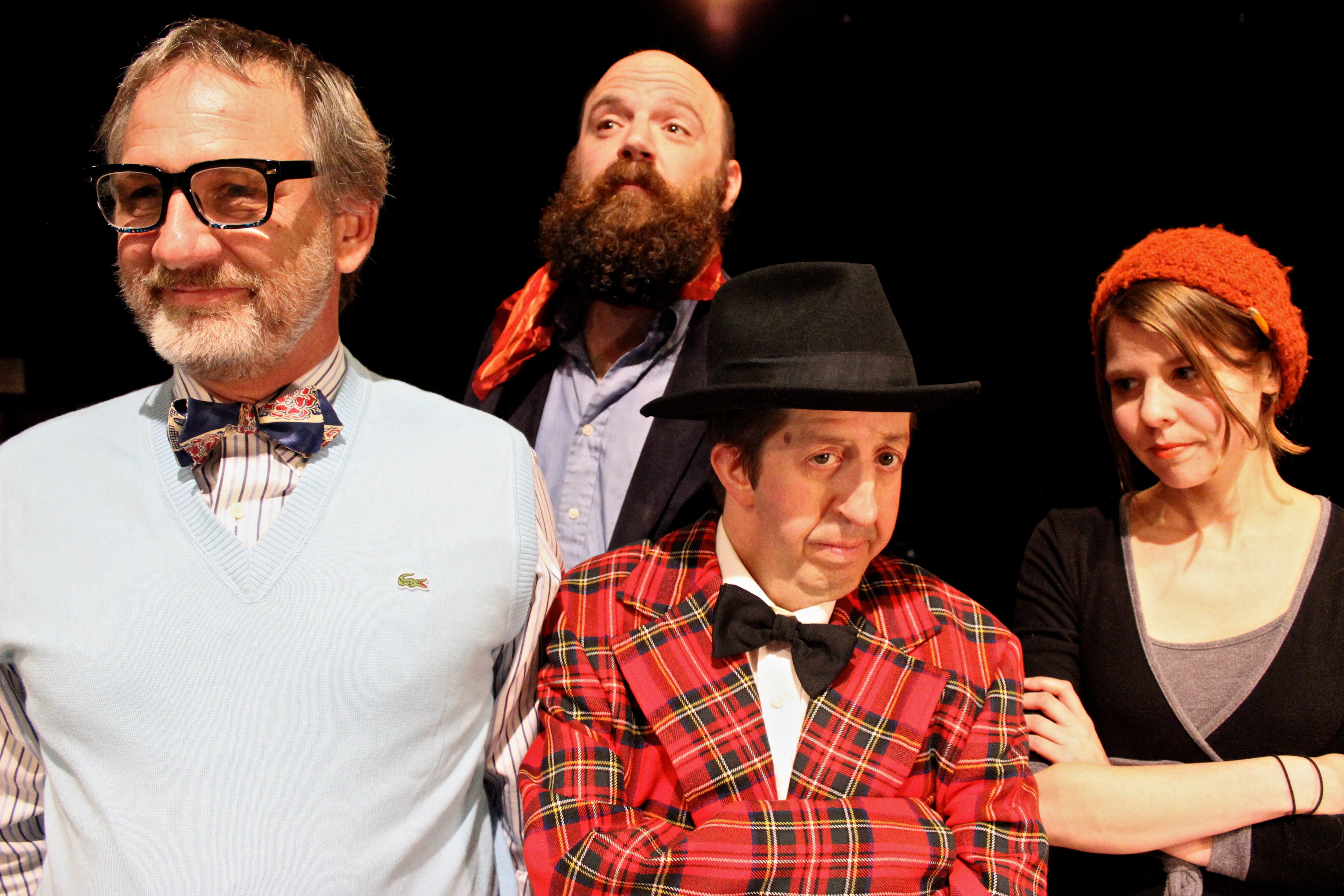Interview by Scott Dowd
 |
| Dwight Rhoden. Photo by Jae Man Joo. |
Since 1983, when the curtain first went up at The Kentucky Center, diversity has been a crucial part of its mission. Indeed, Louisville’s arts community boasts a particularly rich and diverse heritage, one to which the Center has long paid homage. Back in the 1930s, ’40s and ’50s, “The Midnite Ramble” described the live musical performances that would take place at midnight on the movie house stages along Walnut Street (now Muhammad Ali Boulevard), the hub of Louisville’s African American community. Moms Mabley, Redd Foxx, the Clovers and Clyde McPhatter and the Dominoes were just a few of the entertainers who performed there for Louisville audiences. As a tribute to the Walnut Street of yesteryear, The Kentucky Center celebrates our community’s cultural heritage with its Brown-Forman Midnite Ramble series. Over the years, the series has evolved from its traditional roots to embrace and reflect our diversity and commonwealth. Reviving that tradition of great performers, one of this year’s productions features Complexions Contemporary Ballet, a New York-based company founded seventeen years ago by two former members of the famous Alvin Ailey American Dance Theater: Dwight Rhoden and Desmond Richardson. Mr. Rhoden, who was once a principal dancer with Alvin Ailey, now functions as Complexions’ principal choreographer. Rhoden has created over eighty ballets for Complexions as well as for numerous other companies, including Alvin Ailey, The Arizona Ballet, The Aspen Santa Fe Ballet Company, Ballet Gamonet, The Dance Theater of Harlem, Dayton Contemporary Dance Company, The Joffrey Ballet, Miami City Ballet, New York City Ballet/Diamond Project, North Carolina Dance Theater, The Pennsylvania Ballet, Philadanco, Minneapolis Dance Theater, Phoenix Dance Company, Sacramento Ballet, Oakland Ballet, Pittsburgh Ballet Theater, The Washington Ballet and Zenon Dance Company. He has directed and choreographed for television, film, theater and live performances, including So You Think You Can Dance, E! Entertainment’s “Tribute to Style” and Cirque du Soleil. Rhoden has also worked with such high-profile artists as Prince, Lenny Kravitz, Kelly Clarkson and Patrick Swayze.
 |
| Complexions Contemporary Ballet. Photo by Jae Man Joo. |
DR: We actually didn’t set out to start a company. In 1994, Desmond and I were both leaving the Ailey company. Desmond was going overseas to dance with William Forsyth at the Frankfurt Ballet, and I was going to concentrate on choreography.
SD: Had you decided to retire as a dancer?
DR: I wasn’t sure if I was going to stop dancing or not. I just knew it was time to move on. I had had a great career with Ailey, but it was just time to take those next steps. I had choreographed my first piece on a major piece for the Ailey company during the time I was there and had been bitten by the choreography bug. In 1994, I was working on projects with smaller companies on the side and asking my friends, including Desmond, to get together and experiment with movement. During those sessions, Desmond and I decided we wanted to do a performance and I had this bright idea to choreograph the whole show.
SD: But you had no company of dancers?
DR: We invited friends of ours and other people we didn’t know but had seen and loved. We got together people from all the companies around New York City: the Joffrey, the American Ballet Theatre, New York City Ballet, certainly Alvin Ailey American Dance Theatre, as well as some dancers who didn’t have a lot of formal training but were amazing movers.
SD: And you put on a show.
DR: Yes, it was a symphony space on 95th and Broadway. We gave three performances and we sold out every night. By the time the show opened, we already knew we were onto something. The rehearsal process was an amazing experience with all of these dancers from different worlds. Up to that point, there hadn’t been a lot of cross-pollination of these companies. I might be down on the floor choreographing a Joffrey dancer with an Ailey dancer and a dancer from the Downtown Scene. It was very, very contemporary with modern dance and ballet – we had all those contrasts in the room and it was such an exciting process that we knew there was something more there. We got to the tech rehearsal the night before opening and looked at each other and said, “Wow! This is pretty amazing.” We felt obligated to do something more with it, and that’s when we decided to start the company.
SD: How many dancers are in the company?
DR: Fourteen.
SD: What qualities do you look for in a dancer who wants to be a part of your company?
DR: We look for a clean, clear instrument. Desmond and I were both classically trained yet chose contemporary modern dance paths in what we do. What we look for has evolved over the years, but essentially we want versatile dancers. We look for people with the passion who are not afraid to step outside the box a little bit. We also look for people who are willing to take some risks, because to make work that is compelling, you have to be willing to make yourself uncomfortable. Complexions at this point – 17 years in – is definitely a brand, and we don’t want all the dancers to look alike. It’s almost like making a good stew – we’re looking for different, exceptional qualities to combine into one larger whole.
SD: So you’re removing boundaries for the dancers. What are you trying to bring to your audience?
DR: Everyone talks about diversity, but we actually have been doing it from step one. I’m not saying that we’re infallible, but at every turn of the company we’re looking to create those contrasts. When you come to a Complexions program, you will certainly see a culturally and racially diverse company – you will see different types of bodies performing many different movement styles. There is a diversity of programming that might include a piece en pointe in one act contrasted with a modern, grounded work in another. You may see dances set to pop music and a classical Rachmaninoff ballet on the same program. We are a contemporary dance company, but the emphasis for us is on dance, without regard to stylistic confines.
SD: Over the past 17 years you’ve created more than 80 works for Complexions. Where does a new work begin?
DR: It sort of depends on the project. Sometimes it’s the music; sometimes it’s something I want to talk about or refers to something in my own life. More often than not, it’s about the dancers standing in front of me. I certainly walk into the room with my ideas, and there have been times when my mind was made up about the music before we started. Often I begin with options and I start to work on the movement with the dancers and let it evolve. It happens in all different types of ways. But the dancers are a huge part of where the work goes, how the work is developed and how it eventually comes out. One of our goals at Complexions is to always bring people closer to dance and let them in on what we’re up to.
SD: I understand this is the last year Desmond Richardson will tour with the company.
DR: Yes. He will remain the artistic director and we’ll work more side-by-side as opposed to him being a performer – although he’s not retiring from the stage and plans to work on other projects, including a one-man show scheduled for 2013.
SD: A few years ago you and he and members of the company expanded your visibility by participating in the FOX Network program So You Think You Can Dance? How did that come about, and what made you all decide this was a good venue for Complexions?
DR: Well, someone called and asked me to do it. Desmond and I both have worked in the commercial world; Desmond has done some work with pop stars and things like that. Regardless of what someone might think about the show itself, I believe it brings people closer to dance. I think anything that educates the public in any way about dance and movement and exposes them to what’s out there is a good thing. I have fun doing it, and I don’t feel that just because I create ballets for Pittsburgh or the New York City Ballet I can’t go on FOX and still do my thing. There are a lot people who have issues with that, but that’s not who Desmond and I are. We’re not snobby that way.
SD: Looking at the arts spectrum, it seems to me that there are a lot of changes taking place in the way people look at what they do and how they go about the business of making art.
DR: I’m working on a piece right now that is set to the music of J. S. Bach – a Baroque piece for Pittsburgh Ballet Theatre. At this point, I am commissioned mostly by ballet companies across the country and in Europe. I love classical ballet, I trained in classical ballet and I think it’s a beautiful art form. But classical ballet must continue to evolve; it has to go further. There will always be the Swan Lakes; but, if you’ve noticed, all ballet companies have a contemporary series at this point. Art should reflect the world we live in. Court dances are beautiful, but contemporary ballet is all about trying new things and reflecting what’s happening now. I think that’s what we’re supposed to do and it’s what artists have always done.
SD: American artists in particular are driven by economic concerns.
DR: I know from running a company that in this day and age we are all looking for creative ways to market what we do and get more people in the seats so we can have the support we need to continue.
SD: When did you first come to dance?
DR: Very, very late. I took my first dance class when I was 18. I was a social dancer and got involved in a lot of dance contests in high school. The story is actually kind of archetypal – a girlfriend who was a dancer with a local company encouraged me to come to the studio and take a real dance class. I started with modern dance and took ballet on the weekends. I found my passion. I was a musician, thought I wanted to be an actor, but dance trumped everything.
SD: Does Complexions have an educational outreach program?
DR: Yes, we do. We have two summer intensives and a winter intensive. The starting age for those is 12. We also do a lot of outreach in the cities as we tour. We are in Las Vegas at the moment, and yesterday the company gave an educational performance and master class. Today we’re on our way to Salt Lake City, and we have another series of master classes set up for our time in Utah. It’s a big part of what we do. This year Desmond kicked off his Next Generation Fund and is really leading that cause for us.
SD: I would like to talk more about the idea of diversity. There is a real push here in Louisville right now to expand the magnet school programs for the arts to the elementary and middle schools. Those programs have been established in areas of the city that are historically under-served.
DR: Kids have to be able to see themselves up there. More and more I think the world is diversifying, but we are by no means there. Kids need to experience the possibilities and be empowered to dream and understand that they can do these things. With Complexions, Desmond and I started 17 years ago with the idea of creating a diverse ensemble. The physical manifestation of that idea is only its most obvious expression. Kids connect with that when they see all these different types of people working together in a harmonious way. It speaks volumes. We add layers to that idea with the selection of music. We might use Marvin Gaye in one piece, U2 in another and classical music in a third. We try to show new ways of partnering in dance, and that’s what people connect to. We have been very successful with these ideas in that our audiences range from the very young, non-traditional kids right through to the more usual ballet crowd. We don’t have a black audience just because two black men are running the company.
SD: You are certainly drawing from a deep well of influences, many of which go beyond the confines of the dance world.
DR: Sure, we’re reflecting pop culture – everything, really. I want to reflect the world around me. That’s what’s interesting to me. The dancers influence that, too, because they’re what is now and we are making the statement that we are here with a strong connection to the things that happened before. We are restating traditional forms and stretching them further.
The Kentucky Center’s Brown-Forman Midnite Ramble featuring Complexions Contemporary Ballet is one performance only on Friday, February 3, 8 p.m. at the historic Brown Theatre, 315 W. Broadway. Ticket prices range from $25 to $42.50. To learn more about Complexions and see videos of some of their performances, go to www.complexionsdance.org. For more information on this and other upcoming Kentucky Center presentations, and to buy tickets, call the box office at 502.584.7777 (800.775.7777) or visit their web site at www.KentuckyCenter.org.




